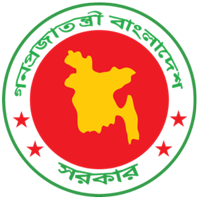The Silent Guardians of Global Immunisation: Understanding the Economics of Reaching Zero-Dose Children
In the quest to ensure every child receives life-saving vaccines, the focus has shifted to the “zero-dose” children—those who have missed out on all routine immunisations. This group is at the heart of both the World Health Organization’s (WHO) Immunisation Agenda 2030 and Gavi’s 5.0 strategy. However, decision-makers often face a significant challenge: a lack of economic evidence on the cost, cost-effectiveness, and efficiency of reaching these vulnerable children.
In April 2024, key stakeholders came together to address this gap. They discussed methods, approaches, and challenges in estimating the cost of reaching zero-dose children. The Zero Dose Learning Agenda (ZDLA), spearheaded by the Bill & Melinda Gates Foundation, is at the forefront of this effort. Working in countries with high numbers of zero-dose children like the Democratic Republic of Congo, Ethiopia, Nigeria, India, and Pakistan, ZDLA aims to understand the root causes, develop interventions, and refine these through continuous learning.
Bangladesh is the focal point for these initiatives, thanks to the efforts of the JSI-led Zero-Dose Learning Hub (ZDLH). Funded by Gavi, ZDLH is part of a global consortium that supports four country learning hubs, including Bangladesh. These hubs aim to advance the use of research to improve immunisation policies and programming. In Bangladesh, there is a growing interest in understanding the incremental costs of reaching under-immunised and zero-dose children.
VillageReach is another key player, conducting economic evaluations to assess the cost-effectiveness of interventions in reducing zero-dose outcomes. Their work in Tshopo and Haut-Katanga provinces in the DRC involves mapping, door-to-door vaccination, and improving supply chains. By understanding the direct and indirect costs, they aim to determine the value for money of these interventions.
ThinkWell and UNICEF are also contributing to this mission. ThinkWell, in collaboration with local partners, analyses the costs and outputs of interventions in Ethiopia, Pakistan, and other countries. UNICEF’s projects in Ethiopia, Kenya, and Uganda focus on financial sustainability and costing studies, with a particular interest in reaching vulnerable populations such as internally migrated people and urban poor.
The JSI-led ZDLH in Bangladesh is particularly focused on incorporating costing indicators and study designs to generate reliable data for subnational areas. This will help in understanding the cost for vaccination per child, including those who are under-immunised or zero-dose.
These efforts highlight the silent yet crucial work being done to protect the world’s most vulnerable children. By generating robust economic evidence, stakeholders can make informed decisions that ensure every child, regardless of their background, has access to life-saving vaccines. The journey to zero-dose is not just a health imperative but an economic one, ensuring that resources are used effectively to achieve global immunisation goals.
Reference:
Economics of reaching zero-dose children [Internet]. Immunization Economics. 2024 [cited 2024 Jul 29]. Available from: https://immunizationeconomics.org/zero-dose/









